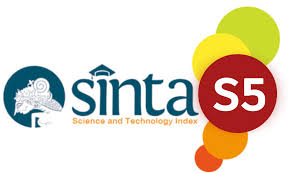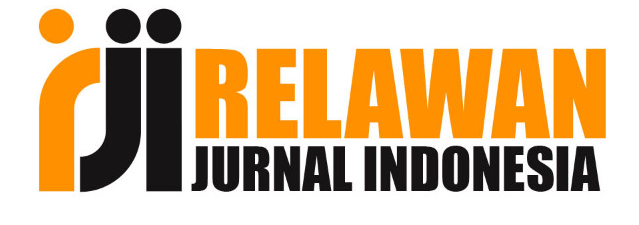WHAT ARE THE ROLES OF EDUCATIONAL ELECTRONIC TOOLS IN READING MOTIVATION? A LITERATURE REVIEW
DOI:
https://doi.org/10.36982/jge.v10i1.2175Keywords:
electronic tools, reading, teaching and learningAbstract
Two main types of educational technology tools (ICT and DERs) are likely mediate and enhance reading motivation as well as reading comprehension through personalized activities and engaging activities. Though, technology provides students with various interactive features that can suit students’ learning style and learning level, framework and approaches like constructionist framework, top-down and bottom-up approaches, as well as learning from technology and learning with technology concepts will navigate learning activities on what ways and how the technologies are used in reading activities, thus improve students’ reading motivation, reading comprehension, and reading fluency. Reading motivation questionnaire alone might give insight to the researchers on the change of reading motivation before and after the intervention, but triangulating the data from questionnaire with the data from interview, observation, and students diary likely expands the information gauged in terms of students’ problems and difficulties in using the technologies, their preference regarding learning activities, and how the technologies with the approaches/concepts/approach can enhance learning, increase students’ reading motivation, comprehension, and fluency.References
Ahmetović, E., Bećirović, S., & Dubravac, V. (2020). Motivation, anxiety and students’ performance. European Journal of Contemporary Education, 9(2), 271–289. https://doi.org/10.13187/ejced.2020.2.271
Alberola-Mulet, I., Iglesias-MartÃnez, M. J., & Lozano-Cabezas, I. (2021). Teachers’ beliefs about the role of digital educational resources in educational practice: a qualitative study. Education Sciences, 11(5). https://doi.org/10.3390/educsci11050239
Bahari, A., Zhang, X., & Ardasheva, Y. (2021). Establishing a computer-assisted interactive reading model. Computers and Education, 172(May), 104261. https://doi.org/10.1016/j.compedu.2021.104261
Bailey, D., Almusharraf, N., & Hatcher, R. (2021). Finding satisfaction: intrinsic motivation for synchronous and asynchronous communication in the online language learning context. Education and Information Technologies, 26(3), 2563–2583. https://doi.org/10.1007/s10639-020-10369-z
Baker, L., & Wigfield, A. (1999). Dimensions of children’s moti- vation for reading and their relations to reading activity and reading achievement. Reading Research Quarterly, 34(4), 452–477. https://doi.org/10.1598/RRQ.34.4.4
Chen, C. H. (2020). AR videos as scaffolding to foster students’ learning achievements and motivation in EFL learning. British Journal of Educational Technology, 51(3), 657–672. https://doi.org/10.1111/bjet.12902
Chen, P.-H. (2019). The Joint Effect of Reading Motivation and Reading Anxiety on English Reading Comprehension:A ï¼£ï½ï½“ï½… ï½ï½† ï¼´ï½ï½‰ï½—ï½ï½Žï½…se Univeristy Leï½ï½’ners. Taiwan Journal of Tesol, 16(2), 1–39. https://doi.org/10.30397/TJTESOL.201910
Ciampa, K. (2015). Motivating grade 1 children to read: Exploring the role of choice, curiosity, and challenge in mobile eBooks. Reading Psychology, 37(5), 665–705. https://doi.org/10.1080/02702711.2015.1105337
Deshpande, A., & Chukhlomin, V. (2017). What Makes a Good MOOC: A Field Study of Factors Impacting Student Motivation to Learn. American Journal of Distance Education, 31(4), 275–293. https://doi.org/10.1080/08923647.2017.1377513
Fortunato, M., Moreira, A., & Simões, A. R. (2021). Gamifying reading and writing in collaborative EFL primary education. Proceedings of the European Conference on Games-Based Learning, 2021-Septe(September), 901–903. https://doi.org/10.34190/GBL.21.156
Freiermuth, M. R., & Ito, M. (2022). Battling With Books: The Gamification of an EFL Extensive Reading Class. Simulation and Gaming, 53(1), 22–55. https://doi.org/10.1177/10468781211061858
Guthrie, J. T., & Wigfield, A. (1999). How motivation fit into a science of reading. Scientific Science of Reading, 3 (3), 199-205.
Howland, J. L., Jonassen, D. H., & Marra, R. M. (2011). Meaningful learning with technology (4th ed.). New York: Allyn & Bacon.
Jonassen, D. H., Myers, J. M., & McKillop, A. M. (1996). From con- structivism to constructionism: Learning with hypermedia/ multimedia rather than from it. In B. G. Wilson (Ed.), Constructivist learning environments: Case studies in instructional design (pp. 93–106).
Englewood Cliffs, NJ: Educational Technology Publications.
Kafai, Y. B., & Resnick, M. (Eds.). (1996). Constructionism in practice: Designing, thinking, and learning in a digital world. Mahwah, NJ: Lawrence Erlbaum Associates.
Lazowski, R. A., & Hulleman, C. S. (2016). Motivation Interventions in Education: A Meta-Analytic Review. Review of Educational Research, 86(2), 602–640. https://doi.org/10.3102/0034654315617832
Liman Kaban, A., & Karadeniz, S. (2021). Children’s Reading Comprehension and Motivation on Screen Versus on Paper. SAGE Open, 11(1). https://doi.org/10.1177/2158244020988849
Moon, A. L., Francom, G. M., & Wold, C. M. (2021). Learning from Versus Learning with Technology: Supporting Constructionist Reading Comprehension Learning with iPad Applications. TechTrends, 65(1), 79–89. https://doi.org/10.1007/s11528-020-00532-1
Nikolopoulou, K., Akriotou, D., & Gialamas, V. (2019). Early Reading Skills in English as a Foreign Language Via ICT in Greece: Early Childhood Student Teachers’ Perceptions. Early Childhood Education Journal, 47(5), 597–606. https://doi.org/10.1007/s10643-019-00950-8
Qiao, S., Kai, S., Chu, W., Shen, X., & Yeung, S. S. (2022). The impact of an online gamified approach embedded with self-regulated learning support on students ’ reading performance and intrinsic motivation : A randomized controlled trial. (April), 1–15. https://doi.org/10.1111/jcal.12684
Rajabi, A., & Khodabakhshzadeh, H. (2015). The effect of implementation of smart board on Iranian lower-intermediate EFL learners’ reading comprehension and their intrinsic motivation in reading. Mediterranean Journal of Social Sciences, 6(4S1), 281–289. https://doi.org/10.5901/mjss.2015.v6n4s1p281
Ratminingsih, N. M., Mahadewi, L. P. P., & Divayana, D. G. H. (2018). ICT-based interactive game in TEYL: Teachers’ perception, students’ motivation, and achievement. International Journal of Emerging Technologies in Learning, 13(9), 190–203. https://doi.org/10.3991/ijet.v13i09.8170
Rivera-Trigueros, I., & Sánchez-Pérez, M. M. (2020). Conquering the iron throne: Using Classcraft to foster students’ motivation in the EFL classroom. Teaching English with Technology, 20(2), 3–22.
Sevy-Biloon, J., & Chroman, T. (2019). Authentic use of technology to improve EFL communication and motivation through international language exchange video chat. Teaching English with Technology, 19(2), 44–58.
Sezen, D., Massler, U., Ribeiro, P., Haake, S., Iurgel, I., & Parente, A. (2020). Reading to level up: Gamifying reading fluency. Lecture Notes of the Institute for Computer Sciences, Social-Informatics and Telecommunications Engineering, LNICST, 307 LNICST, 3–12. https://doi.org/10.1007/978-3-030-40180-1_1
Tsyganova, L. V., Zubkova, Y. V., Bystrova, N. V., Kutepova, L. I., & Kutepov, M. M. (2021). Game technologies as a means of increasing the educational motivation of university students. Propósitos y Representaciones, 9(SPE1). https://doi.org/10.20511/pyr2021.v9nspe1.808
Yaghi, E. T., Abdullah, D. A., & Mustafa, D. Z. (2019). Investigation on Motivation of Online Reading : A Case Study Preparatory Year Students. The Turkish Online Journal of Educational Technology, 18(2), 40–51.
Yasin, Z., Anwar, H., & Luneto, B. (2021). Multimedia powerpoint-based arabic learning and its effect to students’ learning motivation: A treatment by level designs experimental study. International Journal of Instruction, 14(4), 33–50. https://doi.org/10.29333/iji.2021.1443a
Yau, J. ling C. (2021). Interface Among Motivation, Strategy Application, Comprehension, and Attribution: an Examination of Taiwanese Adolescent Readers of English-as-a-Foreign-Language. English Teaching and Learning, 101–114. https://doi.org/10.1007/s42321-021-00090-6
Downloads
Published
How to Cite
Issue
Section
License
Global Expert: Jurnal Bahasa dan Sastra is published by Universitas Indo Global Mandiri and licensed under a Creative Commons Attribution-ShareAlike 4.0 International License.











